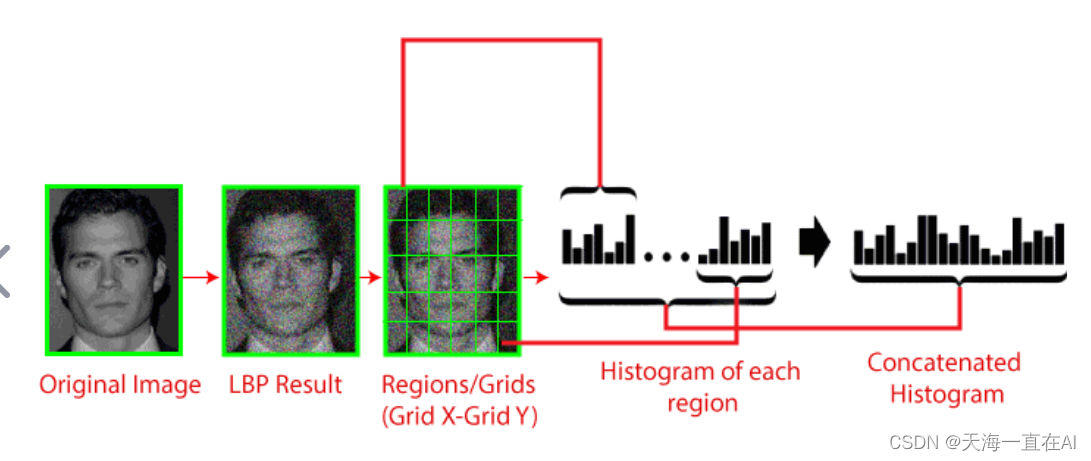揭秘PyCharm集成OpenCV:从小白到实战高手
发布时间: 2024-08-06 03:05:21 阅读量: 46 订阅数: 25 


PyCharm安装教程:下载、安装和基本设置步骤

# 1. PyCharm集成OpenCV概述
**1.1 OpenCV简介**
OpenCV(Open Source Computer Vision Library)是一个开源的计算机视觉库,广泛用于图像处理、视频分析和机器学习等领域。它提供了一系列图像处理和计算机视觉算法,包括图像读取、转换、增强、分割、目标检测、视频处理和目标跟踪等。
**1.2 PyCharm集成OpenCV**
PyCharm是一种流行的Python IDE(集成开发环境),它可以轻松集成OpenCV库。通过集成OpenCV,PyCharm用户可以利用OpenCV的强大功能,在PyCharm环境中开发和调试计算机视觉应用程序。PyCharm提供了一个友好的界面,可以简化OpenCV模块的导入、使用和调试,从而提高开发效率。
# 2. PyCharm集成OpenCV的理论基础
### 2.1 OpenCV简介和安装
**OpenCV简介**
OpenCV(Open Source Computer Vision Library)是一个开源的计算机视觉库,提供了一系列图像处理和计算机视觉算法。它广泛用于各种应用中,如图像处理、视频分析、机器学习和机器人技术。
**OpenCV安装**
在PyCharm中集成OpenCV之前,需要先安装OpenCV。具体步骤如下:
1. **下载OpenCV安装包:**从OpenCV官方网站(https://opencv.org/)下载适用于您操作系统的OpenCV安装包。
2. **安装OpenCV:**按照安装包中的说明安装OpenCV。
3. **验证安装:**打开终端或命令提示符,输入以下命令:
```
python
import cv2
print(cv2.__version__)
```
如果安装成功,您将看到OpenCV的版本号。
### 2.2 PyCharm集成OpenCV的原理
PyCharm集成OpenCV的原理是通过使用Cython,一种将Python代码编译成C代码的工具。Cython可以提高Python代码的执行速度,从而使OpenCV算法在PyCharm中更高效地运行。
PyCharm集成OpenCV的过程如下:
1. **安装Cython:**使用pip命令安装Cython:
```
pip install Cython
```
2. **创建PyCharm项目:**在PyCharm中创建一个新的Python项目。
3. **添加OpenCV库:**右键单击项目目录,选择“添加”>“现有”>“库”。选择OpenCV安装目录中的“cv2.pyd”文件。
4. **编译Cython代码:**在项目目录中创建名为“setup.py”的文件,并添加以下代码:
```
from distutils.core import setup
from Cython.Build import cythonize
setup(
ext_modules=cythonize("your_cython_file.pyx")
)
```
5. **运行编译命令:**在终端或命令提示符中,导航到项目目录并运行以下命令:
```
python setup.py build_ext --inplace
```
6. **导入OpenCV:**在您的Python脚本中,使用以下语句导入OpenCV:
```
import cv2
```
现在,您已成功将OpenCV集成到PyCharm中,并可以使用其强大的图像处理和计算机视觉算法。
# 3.1 PyCharm环境配置
#### PyCharm版本选择
PyCharm集成OpenCV需要使用PyCharm Professional版本或更高版本。专业版提供了对科学计算和数据分析的支持,包括OpenCV集成。
#### OpenCV版本安装
OpenCV的版本选择取决于PyCharm的版本。对于PyCharm 2021.2及更高版本,推荐使用OpenCV 4.5或更高版本。对于PyCharm 2021.1及更低版本,推荐使用OpenCV 4.2或更低版本。
**安装步骤:**
1. 下载OpenCV安装包:https://opencv.org/releases/
2. 运行安装程序,选择PyCharm集成选项
3. 按照安装向导完成安装
#### PyCharm集成配置
**步骤:**
1. 打开PyCharm,点击"File" -> "Settings"
2. 在"Project" -> "Project Interpreter"下,点击"+"按钮添加新的解释器
3. 在"New Interpreter"对话框中,选择"Virtualenv"或"Conda"环境
4. 在"Base interpreter"字段中,选择已安装的Python解释器
5. 在"Packages"选项卡中,搜索"OpenCV"并安装所需的版本
6. 点击"OK"保存设置
### 3.2 OpenCV模块导入和使用
#### 模块导入
导入OpenCV模块的语法如下:
```python
import cv2
```
#### 图像读取
读取图像的语法如下:
```python
image = cv2.imread("image.jpg")
```
其中,"image.jpg"是图像文件的路径。
#### 图像显示
显示图像的语法如下:
```python
cv2.imshow("Image", image)
cv2.waitKey(0)
cv2.destroyAllWindows()
```
其中,"Image"是图像窗口的标题,waitKey(0)等待用户按下任意键关闭窗口,destroyAllWindows()关闭所有OpenCV窗口。
#### 图像转换
图像转换的语法如下:
```python
gray_image = cv2.cvtColor(image, cv2.COLOR_BGR2GRAY)
```
其中,cvtColor()函数将图像从BGR颜色空间转换为灰度空间。
#### 图像增强
图像增强的语法如下:
```python
blur_image = cv2.GaussianBlur(image, (5, 5), 0)
```
其中,GaussianBlur()函数对图像进行高斯模糊,(5, 5)是模糊核的大小,0是标准差。
#### 图像分割
图像分割的语法如下:
```python
_, contours, _ = cv2.findContours(gray_image, cv2.RETR_EXTERNAL, cv2.CHAIN_APPROX_SIMPLE)
```
其中,findContours()函数检测图像中的轮廓,RETR_EXTERNAL表示只检测外部轮廓,CHAIN_APPROX_SIMPLE表示使用简单轮廓近似。
#### 目标检测
目标检测的语法如下:
```python
detector = cv2.CascadeClassifier("haarcascade_frontalface_default.xml")
faces = detector.detectMultiScale(gray_image, 1.3, 5)
```
其中,CascadeClassifier()函数加载Haar级联分类器,detectMultiScale()函数检测图像中的人脸,1.3是缩放因子,5是检测窗口大小的最小变化。
# 4. PyCharm集成OpenCV的图像处理应用
### 4.1 图像读取和显示
图像读取是图像处理的第一步,OpenCV提供了`cv2.imread()`函数读取图像。该函数接收图像路径作为参数,并返回一个NumPy数组,其中包含图像的像素值。
```python
import cv2
# 读取图像
image = cv2.imread('image.jpg')
# 显示图像
cv2.imshow('Image', image)
cv2.waitKey(0)
cv2.destroyAllWindows()
```
**代码逻辑分析:**
* `cv2.imread()`函数读取图像并将其存储在`image`变量中。
* `cv2.imshow()`函数显示图像,窗口标题为`Image`。
* `cv2.waitKey(0)`函数等待用户按下任意键关闭窗口。
* `cv2.destroyAllWindows()`函数关闭所有OpenCV窗口。
### 4.2 图像转换和增强
图像转换和增强是图像处理中常见的操作,用于改善图像质量或提取特定特征。
**图像转换**
图像转换涉及将图像从一种格式转换为另一种格式。OpenCV提供了多种图像转换函数,例如:
```python
# 将图像转换为灰度图像
gray_image = cv2.cvtColor(image, cv2.COLOR_BGR2GRAY)
# 将图像转换为HSV颜色空间
hsv_image = cv2.cvtColor(image, cv2.COLOR_BGR2HSV)
```
**图像增强**
图像增强涉及改善图像的对比度、亮度或其他属性。OpenCV提供了多种图像增强函数,例如:
```python
# 调整图像对比度
contrast_image = cv2.convertScaleAbs(image, alpha=1.5, beta=0)
# 调整图像亮度
bright_image = cv2.add(image, np.array([50, 50, 50]))
```
### 4.3 图像分割和目标检测
图像分割是将图像分割成不同区域的过程,每个区域代表一个对象或感兴趣区域。目标检测是识别和定位图像中特定对象的子任务。
**图像分割**
OpenCV提供了多种图像分割算法,例如:
* **阈值分割:**根据像素强度将图像分割成二值图像。
* **聚类分割:**将图像中的像素聚类成不同的组。
* **形态学分割:**使用形态学操作分割图像。
**目标检测**
OpenCV提供了预训练的目标检测模型,例如:
* **Haar级联分类器:**用于检测人脸、眼睛和其他常见对象。
* **深度学习模型:**用于检测更复杂的物体,如汽车、行人等。
```python
# 使用Haar级联分类器检测人脸
face_cascade = cv2.CascadeClassifier('haarcascade_frontalface_default.xml')
faces = face_cascade.detectMultiScale(image, 1.1, 4)
# 绘制人脸边界框
for (x, y, w, h) in faces:
cv2.rectangle(image, (x, y), (x+w, y+h), (255, 0, 0), 2)
```
# 5. PyCharm集成OpenCV的视频处理应用
视频处理在计算机视觉领域有着广泛的应用,包括视频监控、视频分析、视频编辑等。PyCharm集成OpenCV提供了强大的视频处理功能,本章节将详细介绍如何使用PyCharm集成OpenCV进行视频处理。
### 5.1 视频读取和显示
#### 5.1.1 视频读取
OpenCV提供了`cv2.VideoCapture()`函数来读取视频文件或摄像头流。该函数接收一个参数,可以是视频文件路径或摄像头索引(对于摄像头)。
```python
import cv2
# 读取视频文件
cap = cv2.VideoCapture('video.mp4')
# 读取摄像头流
cap = cv2.VideoCapture(0)
```
#### 5.1.2 视频显示
读取视频后,可以使用`cv2.imshow()`函数显示视频帧。该函数接收两个参数:窗口名称和帧图像。
```python
while True:
# 读取视频帧
ret, frame = cap.read()
# 检查是否读取到帧
if not ret:
break
# 显示视频帧
cv2.imshow('Video', frame)
# 按下Esc键退出
if cv2.waitKey(1) & 0xFF == 27:
break
# 释放视频捕获对象
cap.release()
# 销毁所有窗口
cv2.destroyAllWindows()
```
### 5.2 视频帧处理和分析
#### 5.2.1 视频帧转换
OpenCV提供了多种函数来转换视频帧,包括格式转换、颜色空间转换和大小调整。
```python
# 格式转换
frame = cv2.cvtColor(frame, cv2.COLOR_BGR2GRAY)
# 颜色空间转换
frame = cv2.cvtColor(frame, cv2.COLOR_RGB2HSV)
# 大小调整
frame = cv2.resize(frame, (640, 480))
```
#### 5.2.2 视频帧分析
视频帧分析涉及提取帧中的信息,例如运动检测、对象跟踪和场景识别。OpenCV提供了许多用于帧分析的算法和函数。
```python
# 运动检测
gray = cv2.cvtColor(frame, cv2.COLOR_BGR2GRAY)
diff = cv2.absdiff(gray, prev_gray)
_, thresh = cv2.threshold(diff, 25, 255, cv2.THRESH_BINARY)
contours, _ = cv2.findContours(thresh, cv2.RETR_EXTERNAL, cv2.CHAIN_APPROX_SIMPLE)
# 对象跟踪
tracker = cv2.TrackerKCF_create()
tracker.init(frame, bbox)
# 场景识别
orb = cv2.ORB_create()
keypoints, descriptors = orb.detectAndCompute(frame, None)
```
### 5.3 视频目标跟踪和识别
#### 5.3.1 视频目标跟踪
视频目标跟踪是指在连续的视频帧中跟踪感兴趣的目标。OpenCV提供了多种目标跟踪算法,例如KCF、MOSSE和TLD。
```python
# KCF目标跟踪
tracker = cv2.TrackerKCF_create()
tracker.init(frame, bbox)
while True:
# 读取视频帧
ret, frame = cap.read()
# 检查是否读取到帧
if not ret:
break
# 更新跟踪器
success, bbox = tracker.update(frame)
# 绘制跟踪框
if success:
p1 = (int(bbox[0]), int(bbox[1]))
p2 = (int(bbox[0] + bbox[2]), int(bbox[1] + bbox[3]))
cv2.rectangle(frame, p1, p2, (0, 255, 0), 2)
# 显示视频帧
cv2.imshow('Video', frame)
# 按下Esc键退出
if cv2.waitKey(1) & 0xFF == 27:
break
# 释放视频捕获对象
cap.release()
# 销毁所有窗口
cv2.destroyAllWindows()
```
#### 5.3.2 视频目标识别
视频目标识别是指识别视频帧中感兴趣的目标。OpenCV提供了多种目标识别算法,例如人脸识别、物体检测和场景识别。
```python
# 人脸识别
face_cascade = cv2.CascadeClassifier(cv2.data.haarcascades + 'haarcascade_frontalface_default.xml')
faces = face_cascade.detectMultiScale(frame, 1.1, 4)
# 物体检测
object_detector = cv2.HOGDescriptor()
object_detector.setSVMDetector(cv2.HOGDescriptor_getDefaultPeopleDetector())
objects, _ = object_detector.detectMultiScale(frame, 0, 0, 0.9, (100, 100))
# 场景识别
orb = cv2.ORB_create()
keypoints, descriptors = orb.detectAndCompute(frame, None)
```
# 6.1 人脸识别系统
**实战项目:人脸识别系统**
**目标:**
* 构建一个基于 OpenCV 和 PyCharm 的人脸识别系统。
* 能够识别不同的人脸并提供身份信息。
**步骤:**
1. **数据收集:**收集一组人脸图像,包括正面、侧面和不同表情的照片。
2. **人脸检测:**使用 OpenCV 的 `cv2.CascadeClassifier` 类检测图像中的人脸。
3. **人脸识别:**使用 OpenCV 的 `cv2.face_LBPHFaceRecognizer` 类训练人脸识别模型。
4. **人脸特征提取:**从检测到的人脸上提取特征,如眼睛、鼻子和嘴巴的位置。
5. **人脸匹配:**将新图像中提取的特征与训练模型中的特征进行匹配,识别出人脸。
6. **身份信息显示:**根据匹配结果,显示识别出的人脸的身份信息。
**代码示例:**
```python
import cv2
# 初始化人脸检测器
face_cascade = cv2.CascadeClassifier('haarcascade_frontalface_default.xml')
# 初始化人脸识别器
recognizer = cv2.face_LBPHFaceRecognizer_create()
# 训练人脸识别模型
recognizer.train(faces, labels)
# 人脸识别
while True:
# 读取视频帧
ret, frame = cap.read()
# 灰度转换
gray = cv2.cvtColor(frame, cv2.COLOR_BGR2GRAY)
# 人脸检测
faces = face_cascade.detectMultiScale(gray, 1.3, 5)
# 人脸识别
for (x, y, w, h) in faces:
id, confidence = recognizer.predict(gray[y:y+h, x:x+w])
# 显示身份信息
cv2.putText(frame, str(id), (x, y-10), cv2.FONT_HERSHEY_SIMPLEX, 0.9, (0, 255, 0), 2)
# 显示视频帧
cv2.imshow('frame', frame)
if cv2.waitKey(1) & 0xFF == ord('q'):
break
# 释放视频捕获器
cap.release()
# 销毁所有窗口
cv2.destroyAllWindows()
```
**优化建议:**
* 使用多线程或多进程来提高人脸检测和识别的速度。
* 探索使用更先进的人脸识别算法,如深度学习模型。
* 集成额外的功能,如人脸追踪和情绪分析。
0
0





